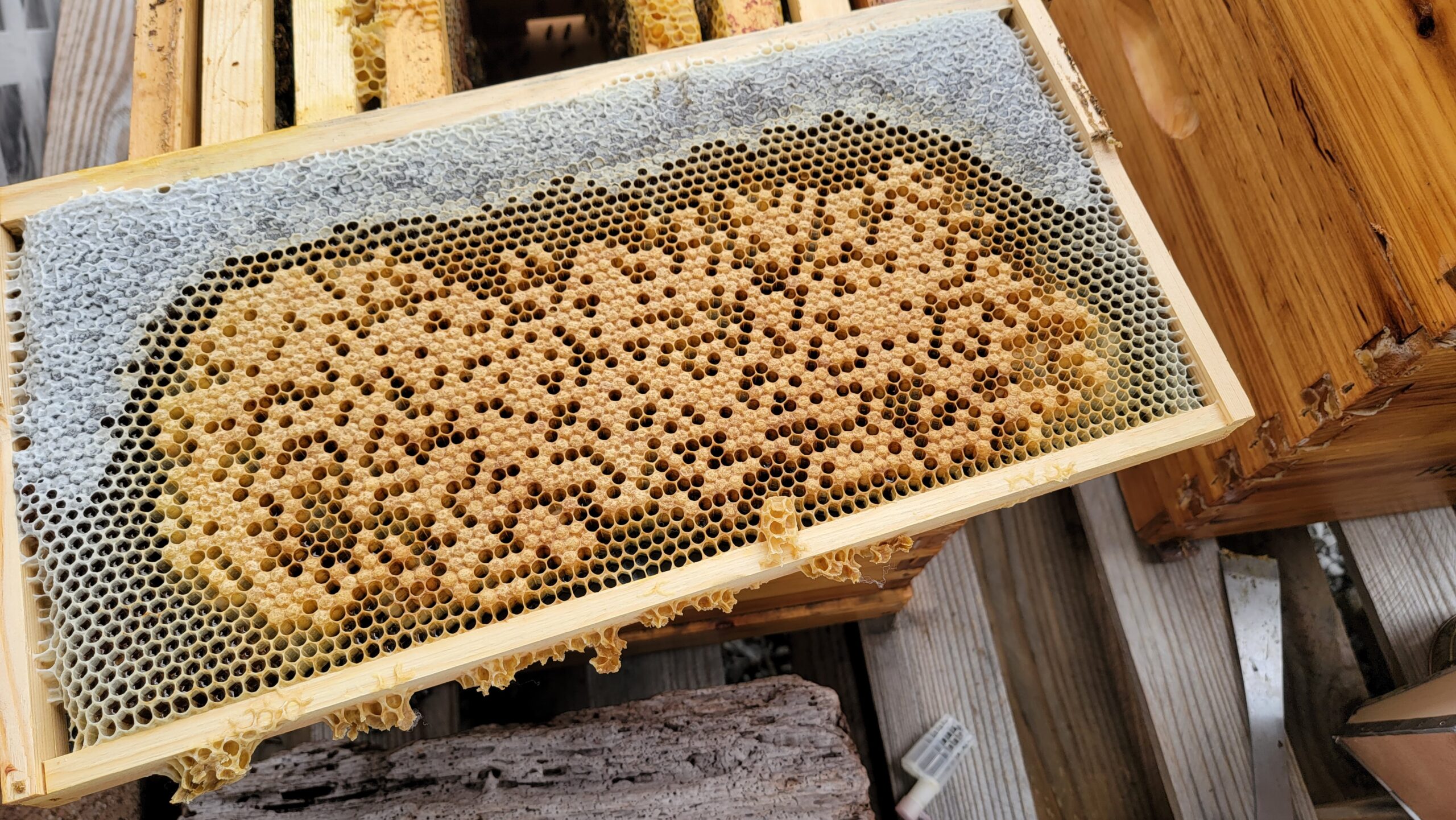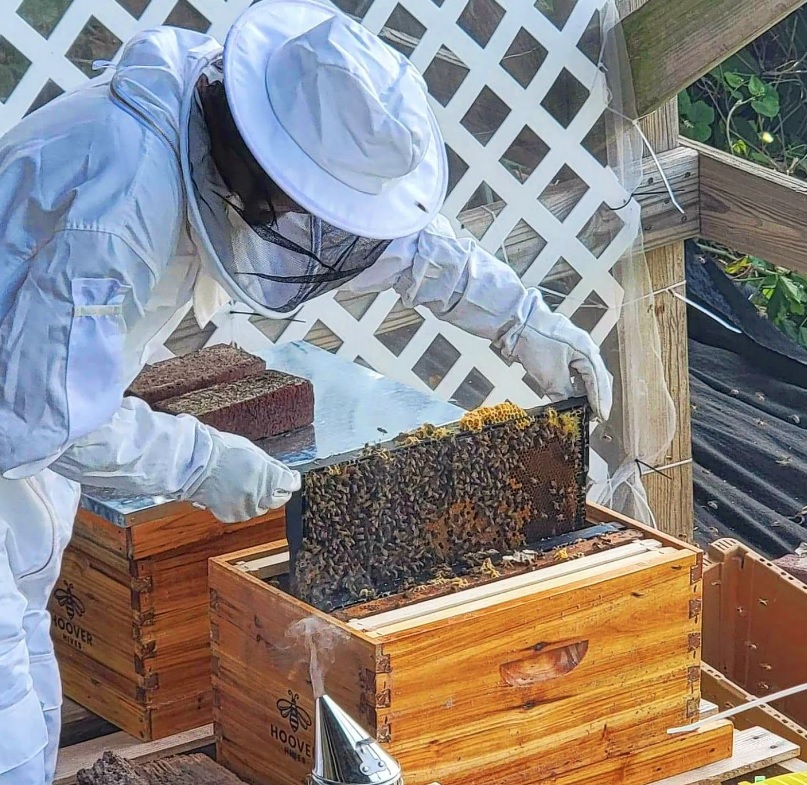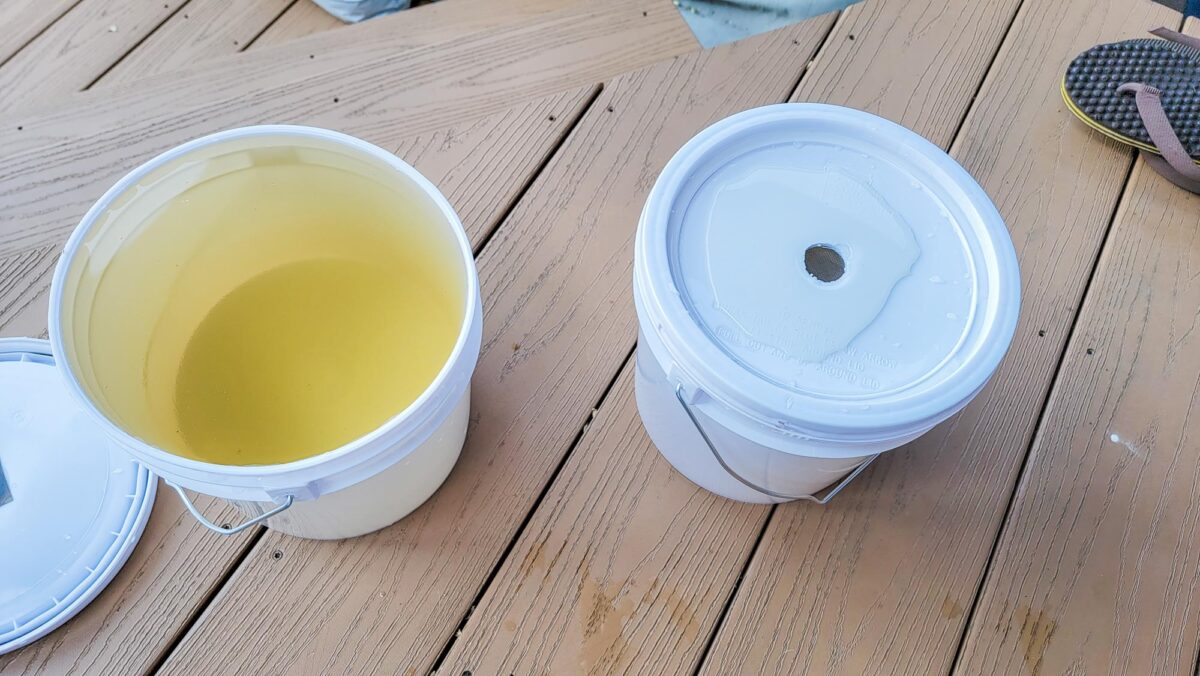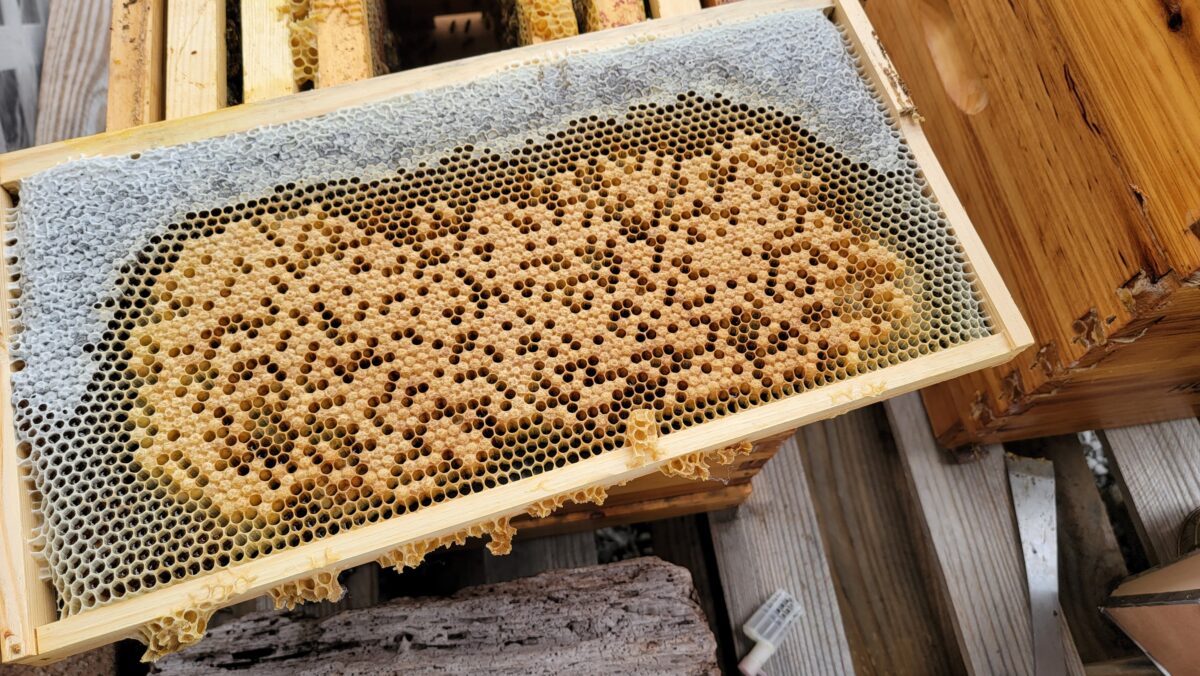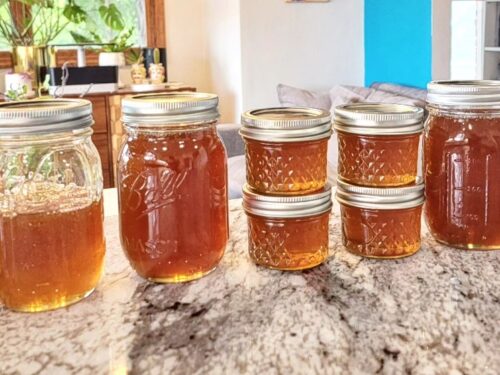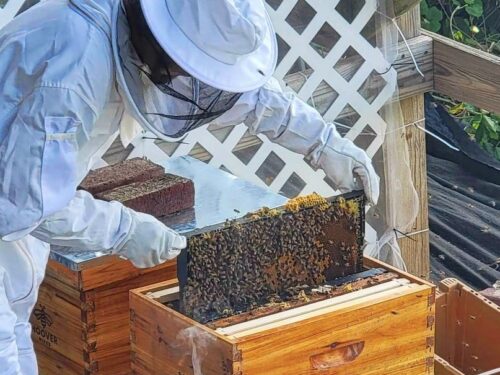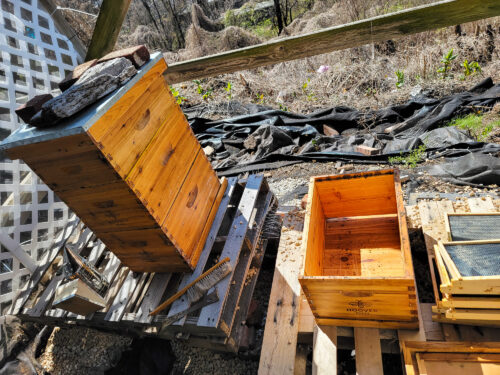Disclaimers: Our site uses demographic data, email opt-ins, display advertising, and affiliate links. Please check out our Terms and Conditions for more information.
When we decided to launch this homesteading project of ours, our main goal was to be as self-sufficient as possible with our little plot of land in the city.
A secondary goal of ours was to try and offset spending that we had for items, particularly around food, that we could grow/make/ferment ourselves as opposed to buying at local markets and stores.
As such, we always love to take a look at how much value our purchases bring to the table, and if we find something that could pay itself off in short order (read: months, not years), we know we have to buy it for our property as soon as possible.
But when it comes to my drive to get into beekeeping, the analysis became tricky. So in this one, we thought we'd share the numbers on how long it takes a beehive to pay itself off, but then jump into an even deeper analysis about why a hive may never actually do that at all!
How Much Does a Beehive Cost?
Before getting into the cost of purchasing a beehive, we have to admit that this is a hobby that requires long-term upkeep. As such, we have to break down spending on both upfront capital expenses (e.g. buying a hive) and then annual operating expenses (e.g. sugar, medicine, etc.) to really get into what possible payback periods could be.
First up, you'll have a huge number of upfront expenses to get into beekeeping. These prices can vary substantially, so these should be considered to be mid-range prices all around:
- Beehive: ~$200/hive
- Bee suit: $100
- Beekeeping equipment set: $75
- Nucleus colony: $150/hive (buy locally if you can)
- Jars for Honey: $50/hive
- Total: $575
Likewise, as most seasoned beekeepers recommend having a minimum of two hives so you can compare and contrast what is going on, you'll likely want a second bee hive and colony at a minimum for another $400 (thankfully equipment and your beesuit can be re-used). So, all told, two hives would be looking like a total cost of about $975.
- This assessment assumes you will be purchasing a conventional Langstroth hive of reasonable quality. Modern hives, like a Flow Hive, cost significantly more and some have the capacity to produce a whole lot less honey on average. We are not thinking of these products with this evaluation.
- Looking to buy a beehive or equipment? Use discount code HIPSTERHOMESTEADERS to take 5% off your order at Galena Farms
Next up, you'll have a wealth of annual operating costs. These can be quite variable as you have to make room for possibly replacing equipment, dealing with one-off disease concerns, or even replacing a colony outright if it does not survive winter at your location:
- Sugar for syrup: $20/hive/year
- Pollen patties, replacing misc. equipment, etc: $20/hive/year
- Mite treatment, hive beetle traps, other treatment: $20/hive/year
- Replacing a failed colony with a new queen: $40/year (one per two hives per year)
- Replacing a failed colony with a new nucleus colony: $150/year (one per two hives per year)
- Total: $310/year for two hives.
There are obviously many caveats here, as all of your hives may die in the winter or you could face even more challenges that need to be addressed, but this should be a base level of annual operating cost that those with one or even two hives will have. Note the emphasis on base, as your spending could be far greater- it just likely won't be much lower.
In fact, we're probably estimating this one low as it could be possible all of your colonies die over winter, and without a surviving hive to split in the spring, you may have to buy even more nucleus colonies- so consider this one possibly being as high as $500/year for two hives if not significantly more. Beekeeping can indeed be quite the money pit, especially when starting out.
How Long Until a Beehive Pays Itself Off?
Now we have to do some fun math, and unfortunately, here we need to look at a few scenarios.
First off, it is horribly unlikely that any new beehive is going to produce honey in the first year. You may get lucky with a frame (~5-8 lbs), but you are more than likely going to have to leave those frames on for winter stores. On the flip side, it is far more likely that a hive (or hives) will outright die in the first year, too- I lost a queen just two months in!
So at a minimum, you're looking at two years' worth of operating expenses before any appreciable harvest outright. This ends up being around $310/hive for the first two years at a minimum.
Second, your beehive production is going to vary considerably from location to location. Hives in the south, which may have a much shorter dormant period, may get to enjoy two or more harvests a year. Those in the north may only get lucky with one. Likewise, the size of your hives can vary the production of honey significantly (an eight-frame medium super has a much lower capacity than a ten-frame deep, for example).
As such, it is impossible to give a single number for production volumes. We've seen estimates of 40 to 200+ lbs of honey per hive, per year, but depending on the combination of these countless scenarios, there really is no one-size-fits-all payback period. But let's say you're in the middle range of production, your hive is established, survives the winter (or can be replaced without impacting harvest), and produces about 80 lbs of honey in any given year (a good middle-of-the-road figure). At approximately $10/lb, the value of production would be $800 of honey per hive if you were able to sell it at market prices.
So now we can look at the payback period.
Let's say you have two hives at $975 upfront cost for two hives and then spend $310/year on operating costs. Let's call the first year a wash with no appreciable harvest (if you get a frame, enjoy the free gift) and say you get $800 of honey per hive in the second year. This would result in an effective “payback” of about two years. ($975 upfront cost plus $620 in hive operating expenses for two years, or $1,595 spent and a net of $1,600 in honey “value”).
If your hive produces double that, your payback period will still be a minimum of two years simply because you will likely have no production in the first year. If your hive produces half of that, you're looking at a minimum of four years. So, generally speaking, it is a reasonable estimate that beehives can become “profitable” in about two to five years with our above numbers.
But in all honesty, this is a perfect world scenario and likely won't happen for many reasons.
The Math is Flimsy Even in the Best Case
This math is, to be honest, a perfect world kind of scenario that may not actually be seen in practice. There are many reasons for this.
First, most new beekeepers should expect significant hive failure within the first year. This could be either accidentally killing a queen, not properly winterizing your hives, or many outside factors not even listed here. Many new beekeepers experience this in their second year as well. Some may have issues in their third year and beyond, too.
The above calculation includes operating expenses for replacing a failed hive 50% of the time, or roughly once every other year per hive, but does not include a delay of harvest from such an impact. If you had hive death over winter and couldn't get a colony split or new shipment of bees until later in the spring, odds are good you won't get a harvest that year either. So instead of making $1,600 in equivalent honey value, you may yield just $800. Every time this happens, assume your payback period will increase another year at a minimum.
Have a season where both hives fail completely, and you don't get an appreciable harvest at all (something that is also fairly common), add on another two years!
Second, this analysis does not include any scenario that would require replacing a hive outright. Hive boxes break down over time, some diseases require hive destruction, and so on. Having to buy another $200+ hive every few years can add extra time to your potential profitability equation. Sadly, this one is so variable we don't want to even try to factor it into our math, but if you want to amortize an extra $50/hive/year for extra replacement costs, you will likely not be too far off.
Suffice it to say, for many production levels this could add on yet another year before you are “profitable”.
Third, the more colonies you have, the better your odds of success. If you have a queen die in one and the hive's attempt at replacing her fails (as happened for me), you could swap out frames of brood from a healthy hive and try again. If you have one hive die over winter and another hive survives, you can do a split to help regain your bee population earlier in the season for free- thus minimizing your operating costs slightly and increasing your odds of being able to harvest despite the loss.
To put it bluntly, the more hives you have, the greater your odds of success over those who have just one (or even two!). This, of course, requires more upfront capital. There is a reason why I'm already planning to expand to four hives, and it is purely because of this point.
Fourth, most hobbyist beekeepers simply don't sell their honey. Between logistics, local laws, and more, a lot of honey simply never gets sold for hard cash in the first place.
We got into beekeeping to barter most of ours away in exchange for equivalent edible goods (fruit tree access, berries, eggs from friends with chickens, etc). As such, the perceptive “value” of honey becomes relative if you're not actually receiving cash in hand in return. For us, we're never going to have a true payback because we simply aren't selling our honey.
Finally, we would go even further in arguing that a “return” of $800 of honey per hive per year is only really beneficial if you're offsetting spending you would've had on honey in the first place. Prior to getting bees, we barely spent $20/year on honey, let alone $800/year or $1,600/year on honey. So the concept of a return is questionable at best for an assessment like this.
- Our article about how long a sparkling water maker takes to pay itself off is a much more accurate assessment in this sense.
As such, while you may have a way to offset your spending with beekeeping at around two to five years, at the end of the day you are still going to be spending a significant amount of money you may not otherwise need to. To be quite honest, it would have been far easier for me to simply buy a gallon of honey from a local apiary every year (at $75-$100 a bucket) and call it a day. My consumption needs would have been met (and then some) without all that time, money, energy, and unnecessary pain in the form of bee stings.
So while the math suggests you could get a return if you have outlets to recoup your costs, at the end of the day, you likely won't even come close unless you're getting into beekeeping to actually sell your honey outright (and even there may have way more operating costs than we're including in this analysis- so keep that in mind, too). This is why non-commercial beekeepers should only really get into the hobby if they have the drive to keep bees for some reason other than generating honey.
Whatever that is for you, be it doing something good for the world or simply doing it because you want to is enough justification for us- we honestly won't judge any answer you give here. But, ultimately, don't think you're going to get into beekeeping to offset any existing spending you currently have. It really doesn't work that way.
Still, I'm quite happy to be taking part in this hobby all the same!
What do you think about how expensive beekeeping is? Is it worth it to you? Comment below to share why or why not!
Start an Apiary Today
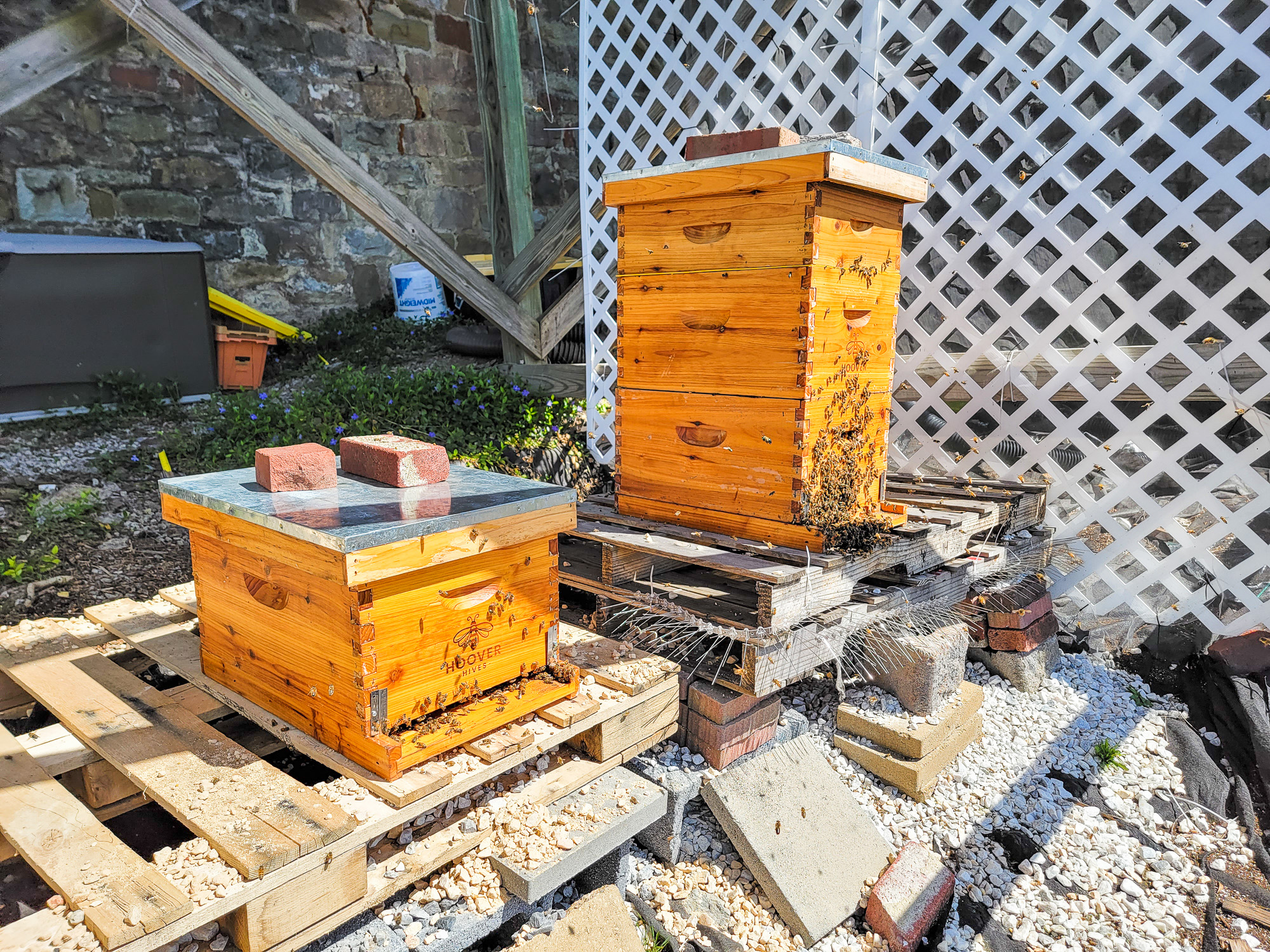
Looking to get into beekeeping? Pick-up preassembled waxed Hoover Hives from Galena Farms. Use discount code HIPSTERHOMESTEADERS to take 5% off your order!

